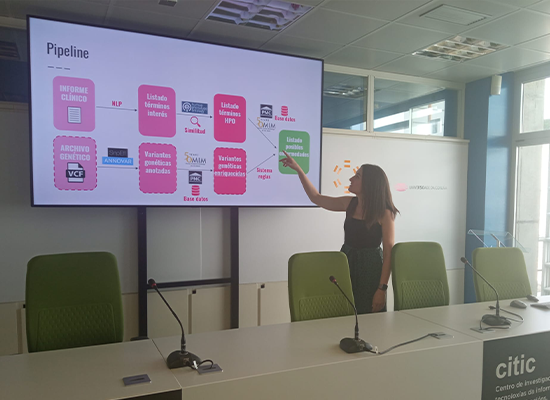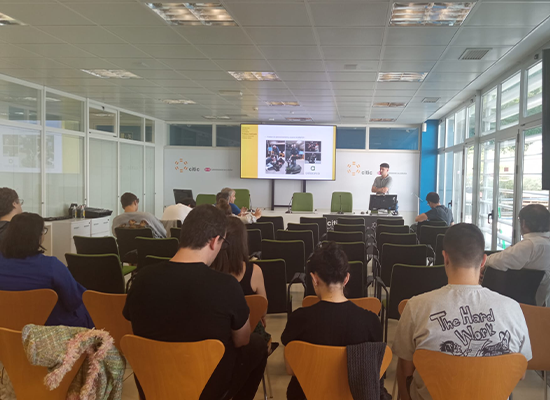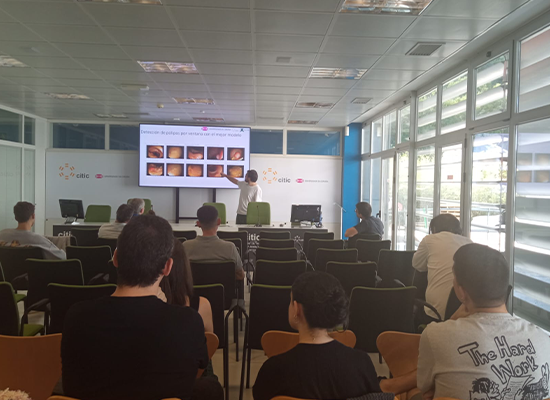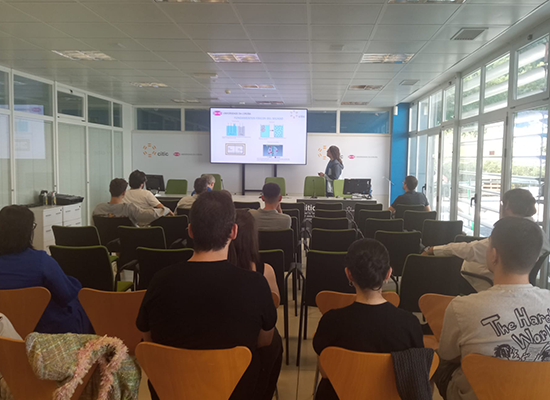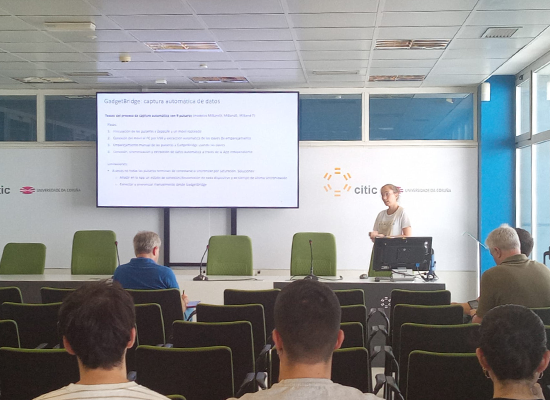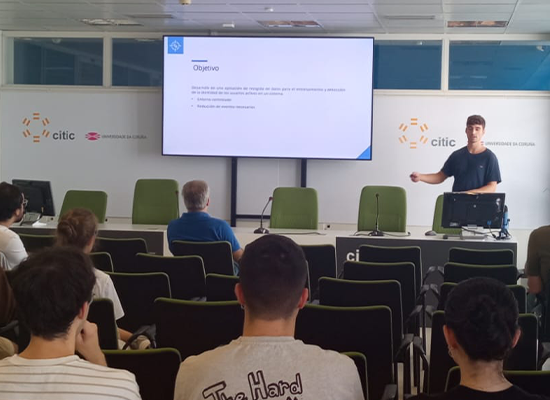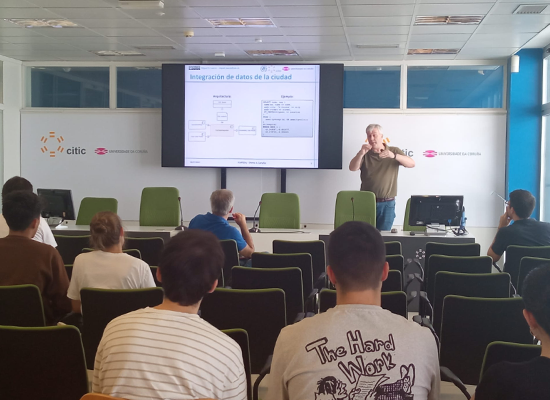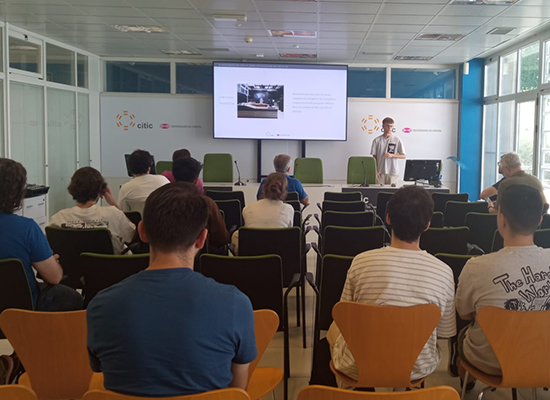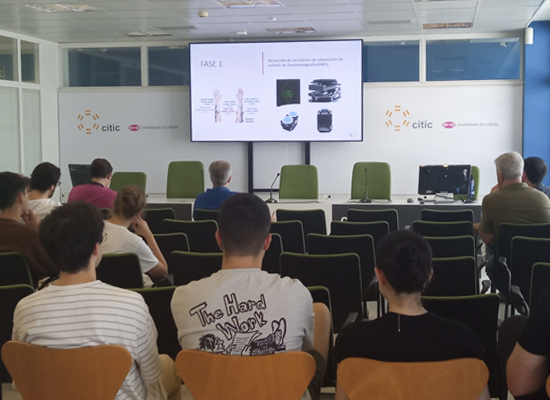
Prototype progress presentation day for CITIC Technology Demonstrator
On Thursday, July 20, the CITIC Cloud Room hosted the “Prototype Progress Presentation Day for the CITIC Technology Demonstrator.” During this event, participating researchers from the center showcased the progress of their work to the CITIC community.
These prototypes are part of CITIC’s commitment to highlight the outcomes of its key research lines. To support this effort, in February of this year, CITIC launched the call “Support for CITIC’s Strategic Lines for the Creation of Prototypes to Showcase Research Results,” aimed at funding new research staff to help increase the visibility of these results.
The event was open to all interested parties and attracted around 30 attendees. Nine of the researchers awarded through the call participated in the event, all affiliated with various research groups from the University of A Coruña (UDC).
The first presentation was delivered by Paula Romero Campo, who introduced her work titled “Intelligent Support System for the Diagnosis of Rare Neurological Diseases.” The developed application, named AtaxAId, is capable of extracting useful information from both medical reports and the patient’s genetic file to contrast it with data from rare disease medical repositories, ultimately assisting specialists in making a diagnosis.
The second prototype was presented by Manuel Lagos Rodríguez, whose project is focused on the “Integration of a Captive Motion System in Virtual Environments for the Rehabilitation of People with Disabilities.” The outcome of his work will support the development of rehabilitation activities where movement is a key factor.
Next, Diego Fernández Edreira showcased his “Polyp Detection Prototype in Colonoscopy Images.” His goal is to develop an application that automatically detects and analyzes potential signs of polyps in patients through colonoscopy images.
The fourth presentation was given by Hiram Varela Rodríguez, who introduced his project titled “Simulation of Drying in Porous Solids.” His prototype enables a detailed observation of the drying process in porous solid materials through 2D numerical simulations, allowing the selection of the most optimal drying method in each case — with a specific example focused on wood drying.
After a short break, Eva Pardo Otero presented her work “Automatic Data Capture from Xiaomi Mi Band.” Her project aims to create a web platform that visualizes the activity of smartband or smartwatch users, focusing on sleep (rest) and the number of steps taken (physical activity). The data gathered will allow for the analysis of healthy habits and the prediction of potential physical or mental health issues.
Following this, Julián González Muñoz presented “Application of Behavioral Patterns in Devices,” which proposes the development of a data collection application designed to train and detect the identity of active users within a system.
The seventh presentation came from Miguel Ángel Rodríguez Luaces, who introduced “Friendly barrierLess Adaptable City Demo A Coruña (FLATCity).” This project aims to create an application to help citizens with varying motor abilities find the most accessible routes across the city. The prototype included a map of the city of A Coruña.
The penultimate presentation was given by Manuel Corujo Muiña, with his project “Development of a Dashboard for Dissemination of HPC Use Cases.” As the title suggests, this initiative seeks to create a navigable dashboard to raise awareness about high-performance computing (HPC), both in general and within the context of the UDC and CITIC.
The final presentation was delivered by Adriana Dapena Janeiro, who shared an explanatory video about her project “Human-Machine Interfaces Based on EMG Signals.” The aim is to develop a system capable of controlling household objects using signals generated by muscle activity.
